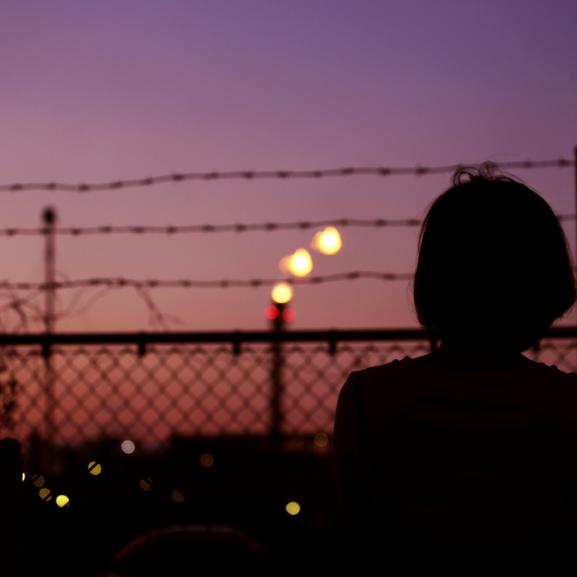From rat infestations to shared bedrooms: sub-standard housing impedes torture survivors’ recovery
Private housing providers contracted by the Home Office continue to house survivors of torture in accommodation that is inappropriate and sometimes dangerous, particularly for families with young children.
A dysfunctional and hostile asylum system means that torture survivors can wait years for their cases to be resolved. During this time, they struggle to survive on a very limited asylum allowance that does not include any provision for improvement of their living environment. For people suffering ongoing physical and mental damage as a consequence of torture, substandard and inappropriate housing worsens their anxiety, undermines their sense of safety and hampers their rehabilitation.
In March 2018 Freedom from Torture submitted evidence, gathered from clients across our five national centres, to the Independent Chief Inspector of Borders and Immigration’s inquiry into asylum accommodation. The inquiry was particularly interested in any developments since the publication of the Home Affairs Committee report on asylum accommodation in January 2017, which incorporated our earlier evidence.
According to Home Office policy concessions negotiated by Freedom from Torture and the Helen Bamber Foundation, torture survivors receiving therapeutic treatment at one of the organisations’ centres should be housed as close as possible. In addition, torture survivors should not be required to share a bedroom with strangers, and in exceptional cases, should be placed in self-contained accommodation. Finally, any special accommodation requirements should be catered for, and any request to move a person from accommodation that is unsafe or unsuitable should be handled on an urgent basis by the Home Office authorities and housing provider.
Despite this clear policy, Freedom from Torture continues to see London clients accommodated outside London travel zones 1-6, and therefore an unreasonable distance from our treatment centre. We also see vulnerable clients in shared room accommodation, and a refusal by authorities to comply with requests for special accommodation arrangements or relocation on therapeutic grounds.
For example, one client, a particularly vulnerable and traumatised man from the Democratic Republic of Congo, was placed in a shared bedroom. His therapist explained that the client suffered from PSTD, with symptoms including nightmares, waking at night screaming, depression, auditory hallucinations, suicidal ideations and chronic pain. Three requests for him to be given a separate bedroom were ignored and he was only moved six weeks later, after the threat of legal action.
Another severely traumatised client was housed in a room lit only by a skylight. The windowless room reminded him of his imprisonment and torture. His mental health deteriorated and he was considered a high suicide risk. Repeated requests for him to be moved resulted in no action. The client resorted to legal action but the matter was only solved when he received refugee status and left his Home Office accommodation.
One client in Glasgow who walked with the aid of a walking stick and suffered epileptic fits was housed on the 14th floor of a building with a lift which went only to the 13th floor. Not only did he experience severe difficulty in climbing stairs but slight differences in height between floors in each room meant he tripped and fell inside his flat. The result is that the client rarely leaves the flat and has become socially isolated. Should there be a fire he would be trapped.
At the root of the problem is the failure by both Home Office staff and housing providers to efficiently share information on vulnerability and any special requirements or to act on that information appropriately and promptly.
For example, a client who used crutches as a result of the severe back pain caused by torture was housed in a property with stairs between her bedroom and the bathroom. When she asked to be moved to somewhere without stairs she was offered a property with the same layout.
Other problems we have noted include:
- Housing infested by rodents and insects, with consequent problems of hygiene and contamination of scarce food supplies. Housing contractors were often unresponsive, tardy or claimed to be unable to eliminate the infestation.
- Parents and children sharing communal space, including the bathrooms, with strangers, or in separate rooms in shared housing.
- Front doors and rooms that are insecure without proper locks, increasing the survivor’s fear and anxiety.
- People housed in initial accommodation – usually high density, full board, dormitory-style accommodation - for months at a time, contrary to policy. Such accommodation, with crowded rooms and corridors, fixed meal times and lack of control, can bring back a torture survivor’s memories of their incarceration.
We believe strongly that earlier and more comprehensive identification of vulnerabilities, followed by more efficient communication of those vulnerabilities or additional needs would result in more appropriate housing allocation and better health outcomes for individuals.
The Home Office and accommodation providers should work more effectively together to identify and meet the needs of vulnerable asylum seekers, such as torture survivors, and correctly apply the torture concessions within the “allocation of accommodation” policy. This would save time and resources for all concerned and would better support the rehabilitation of torture survivors.






